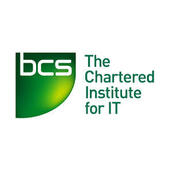IT Apprenticeships
Data Technician Level 3
Data Technician
Overview
The broad purpose of the occupation is to source, format and present data securely in a relevant way for analysis using basic methods; to communicate outcomes appropriate to the audience; analyse structured and unstructured data to support business outcomes; blend data from multiple sources as directed and apply legal and ethical principles when manipulating data. In their daily work, an employee in this occupation interacts with a wide range of stakeholders including colleagues, managers, customers and internal and external suppliers. They would typically work as a member of a team; this may be office based or virtual. An employee in this occupation will be responsible for collecting and processing data under the guidance of a senior colleague or multiple colleagues across the business. This may vary by sector and size of the organisation. An employee would mainly be responsible for their own work but may have the opportunity to mentor others.
The Data Technician Apprenticeship standard syllabus includes the following knowledge modules:
- K1: Range of different types of existing data. Common sources of data - internal, external, open data sets, public and private. Data formats and their importance for analysis. Data architecture - the framework against which data is stored and structured including on premises and cloud.
- K2: How to access and extract data from a range of already identified sources
- K3: How to collate and format data in line with industry standards
- K4: Data formats and their importance for analysis Management and presentation tools to visualise and review the characteristics of data Communication tools and technologies for collaborative working
- K5: Communication methods, formats and techniques, including: written, verbal, non-verbal, presentation, email, conversation, audience and active listening Range of roles within an organisation, including: customer, manager, client, peer, technical and non-technical
- K6: The value of data to the business How to undertake blending of data from multiple sources
- K7: Algorithms, and how they work using a step-by-step solution to a problem, or rules to follow to solve the problem and the potential to use automation
- K8: How to filter details, focusing on information relevant to the data project
- K9: Basic statistical methods and simple data modelling to extract relevant data and normalise unstructured data
- K10: The range of common data quality issues that can arise e.g. misclassification, duplicate entries, spelling errors, obsolete data, compliance issues and interpretation/ translation of meaning
- K11: Different methods of validating data and the importance of taking corrective action
- K12: Communicating the results through basic narrative
- K13: Legal and regulatory requirements e.g. Data Protection, Data Security, Intellectual Property Rights (IPR), Data sharing, marketing consent, personal data definition. The ethical use of data
- K14: The significance of customer issues, problems, business value, brand awareness, cultural awareness/ diversity, accessibility, internal/ external audience, level of technical knowledge and profile in a business context
- K15: The role of data in the context of of the digital world including the use of eternal trusted open data sets, how data underpins every digital interaction and connectedness across the digital landscape including applications, devises, IoT, customer centricity
- K16: Different learning techniques, learning techniques and the breadth and sources of knowledge
Apprentices without level 2 English and maths will need to achieve this level prior to taking the End-Point Assessment.
For those with an education, health and care plan or a legacy statement, the apprenticeship's English and maths minimum requirement is Entry Level 3.
A British Sign Language (BSL) qualification is an alternative to the English qualification for those whose primary language is BSL.
Professional Recognition
Those completing the Data Technician apprenticeship will be recognised for entry onto the BCS, the Chartered Institute for IT, Register of IT Technicians confirming SFIA level 3 professional competence. Those completing the apprenticeship can apply for registration.
Vendor Bonus Qualification
- MTA Database Fundamentals
- MTA Power Platform Fundamentals
On successful completion of the Data Technician Level 3 Apprenticeship standard, you gain the following skills:
- source and migrate data from already identified different sources
- Collect, format and save datasets
- ummarise and explain gathered data
- Blend data sets from multiple sources and present in format appropriate to the task
- Manipulate and link different data sets as required
- Use tools and techniques to identify trends and patterns in data
- Apply basic statistical methods and algorithms to identify trends and patterns in data
- Apply cross checking techniques for identifying faults and data results for data project requirements
- Audit data results
- Demonstrate the different ways of communicating meaning from data in line with audience requirements
- Produce clear and consistent technical documentation using standard organisational templates
- Store, manage and distribute in compliance with data security standards and legislation
- Explain data and results to different audiences in a way that aids understanding.
- Review own development needs
- Keep up to date with developments in technologies, trends and innovation using a range of sources
- Clean data i.e. remove duplicates, typos, duplicate entries, out of date data, parse data (e.g. format telephone numbers according to a national standard) and test and assess confidence in the data and its integrity.
- Operate as part of a multi-functional team
- Prioritise within the context of a projectsource and migrate data from already identified different sources
- Collect, format and save datasets
- Summarise and explain gathered data
- Blend data sets from multiple sources and present in format appropriate to the task
- Manipulate and link different data sets as required
- Use tools and techniques to identify trends and patterns in data
- Apply basic statistical methods and algorithms to identify trends and patterns in data
- Apply cross checking techniques for identifying faults and data results for data project requirements
- Audit data results
- Demonstrate the different ways of communicating meaning from data in line with audience requirements
- Produce clear and consistent technical documentation using standard organisational templates
- Store, manage and distribute in compliance with data security standards and legislation
- Explain data and results to different audiences in a way that aids understanding.
- Review own development needs
- Keep up to date with developments in technologies, trends and innovation using a range of sources
- Clean data i.e. remove duplicates, typos, duplicate entries, out of date data, parse data (e.g. format telephone numbers according to a national standard) and test and assess confidence in the data and its integrity.
- Operate as part of a multi-functional team
- Prioritise within the context of a project
Typical job titles include:
- Data support analyst
- Data technician
- Junior data analyst
- Junior information analyst
How long does it take to complete?
The duration of this apprenticeship is typically 15 months
Typical Job Roles?
Typical job titles include:
- Data support analyst
- Data technician
- Junior data analyst
- Junior information analyst
Is it certified?
Those completing the Data Technician apprenticeship will be recognised for entry onto the BCS, the Chartered Institute for IT, Register of IT Technicians confirming SFIA level 3 professional competence. Those completing the apprenticeship can apply for registration.
Do I get any additional Vendor Qualifications?
In addition, apprentices will gain some valuable independent vendor qualifications such as:
- MTA Database Fundamentals
- MTA Power Platform Fundamentals




